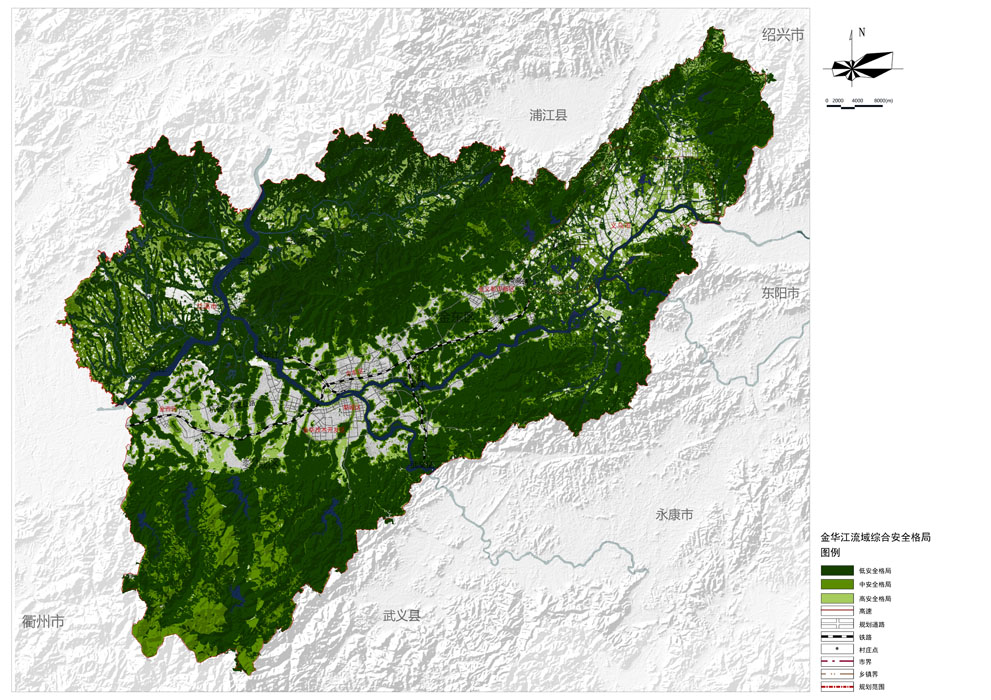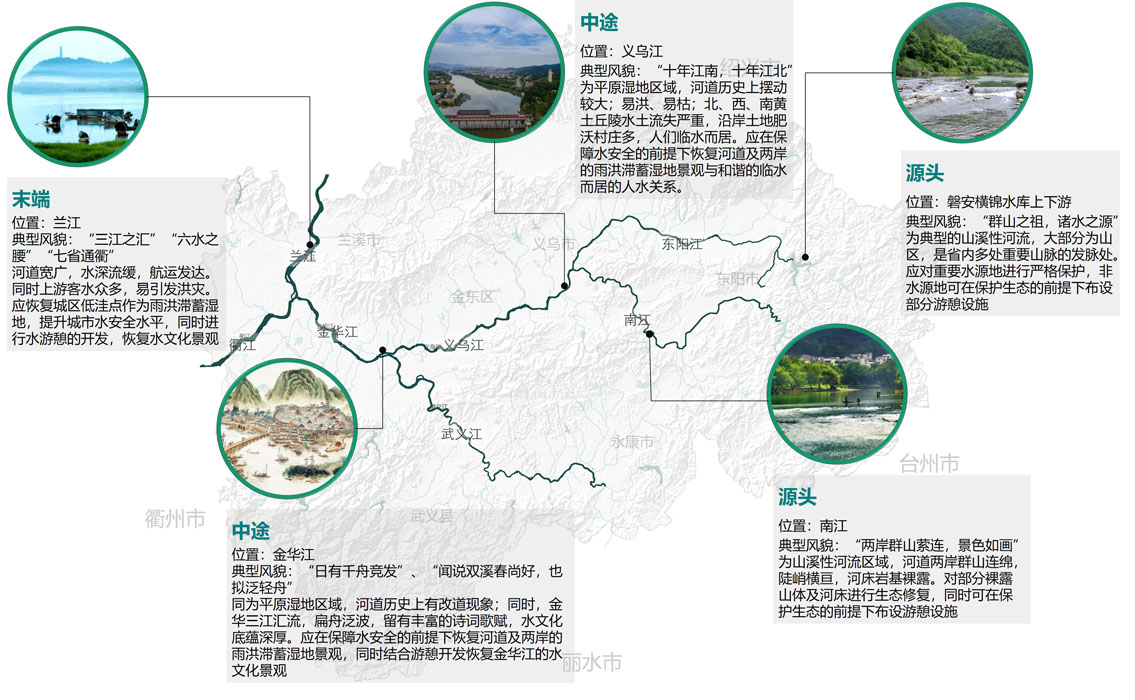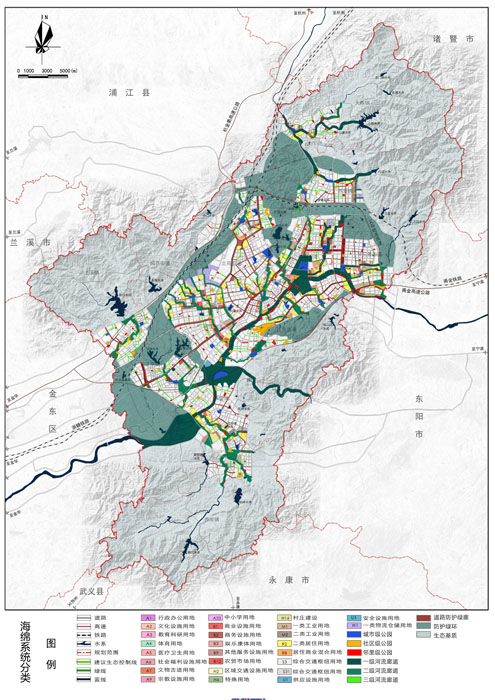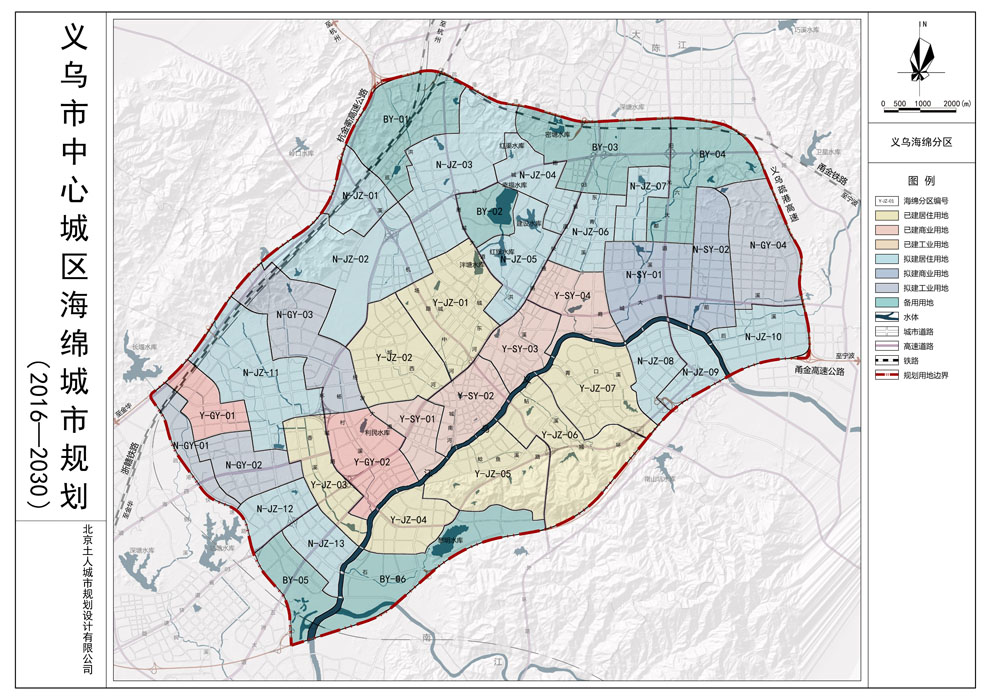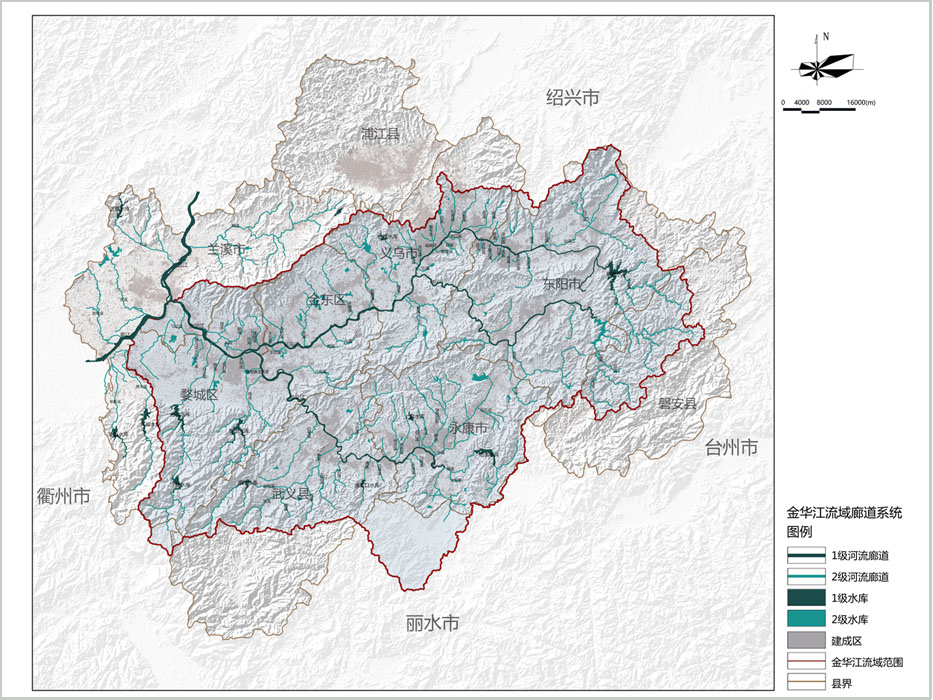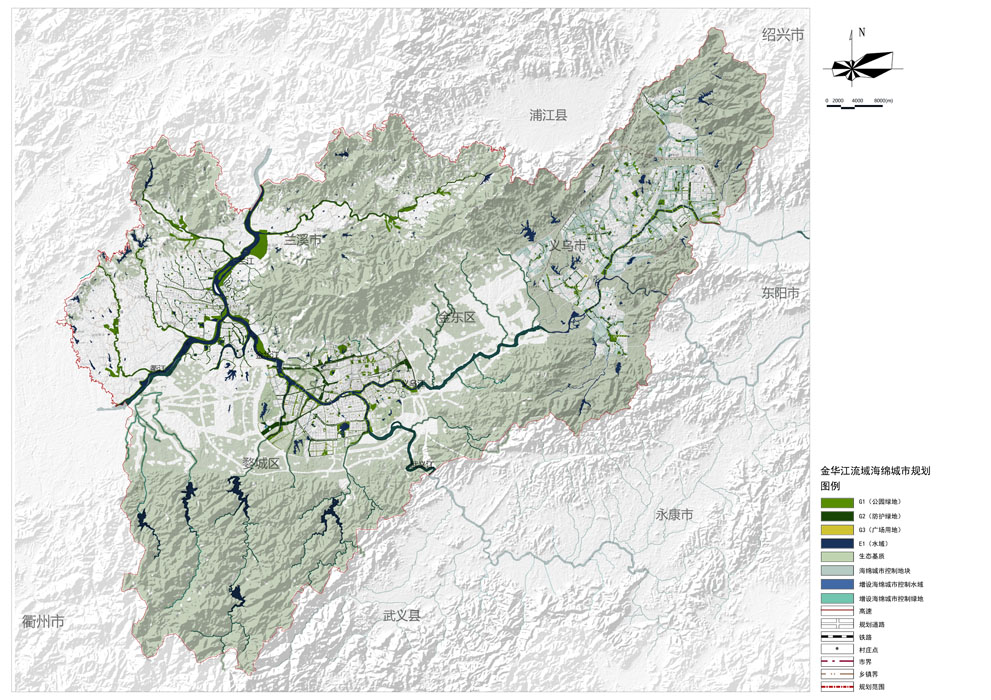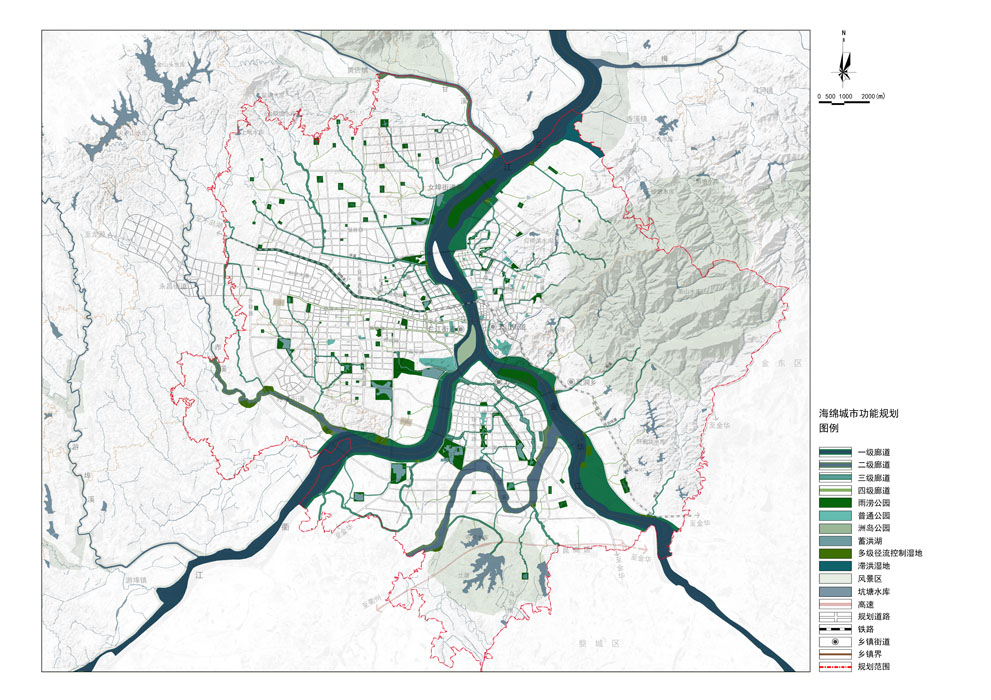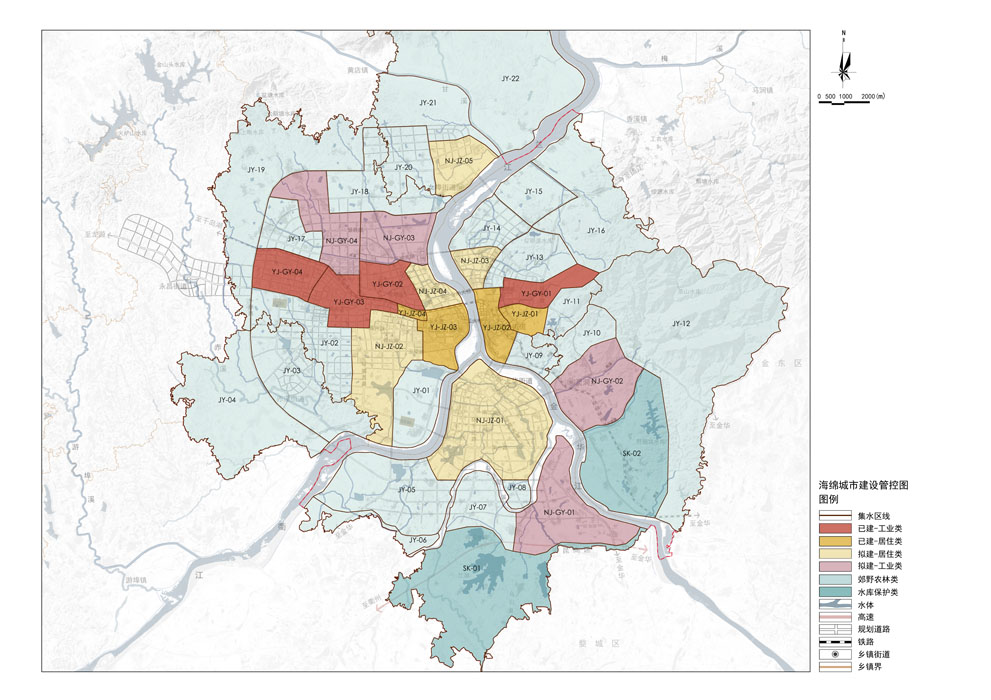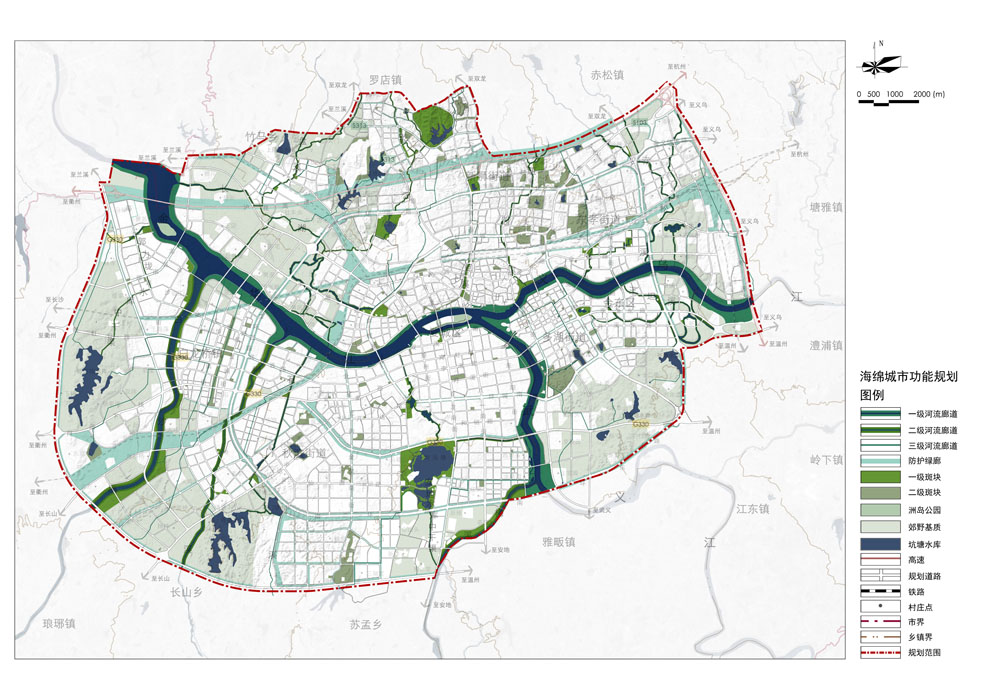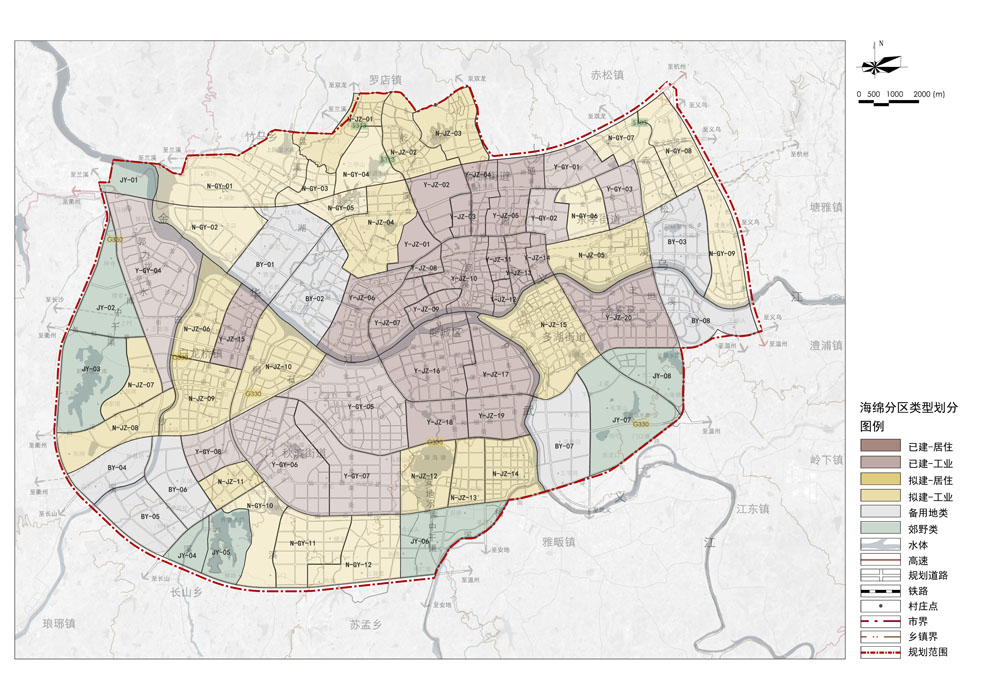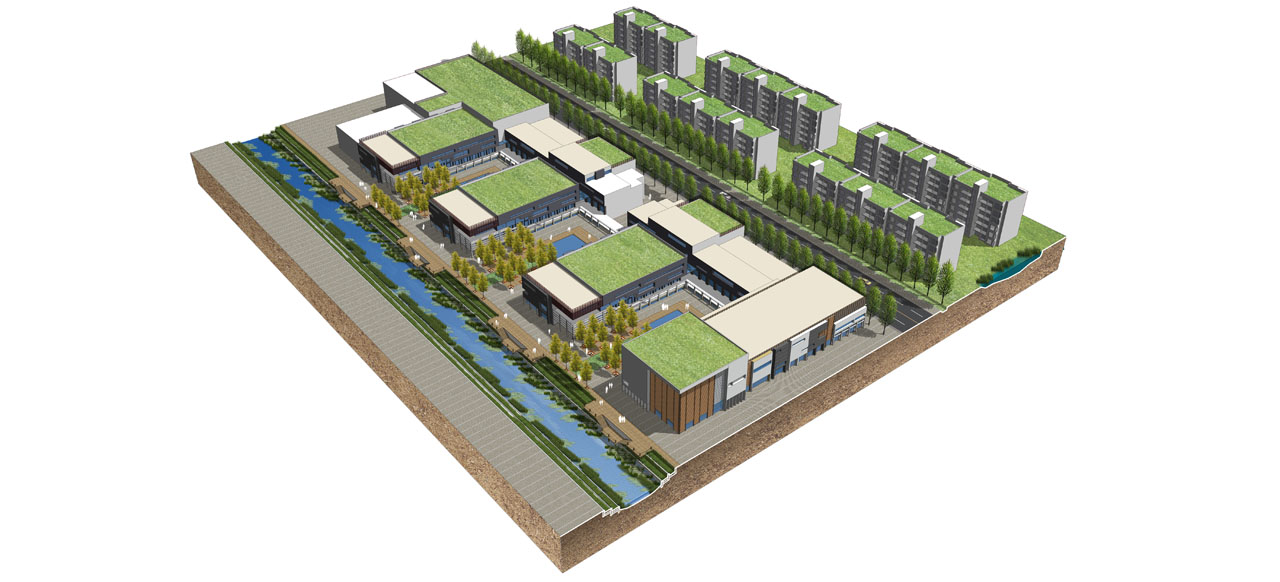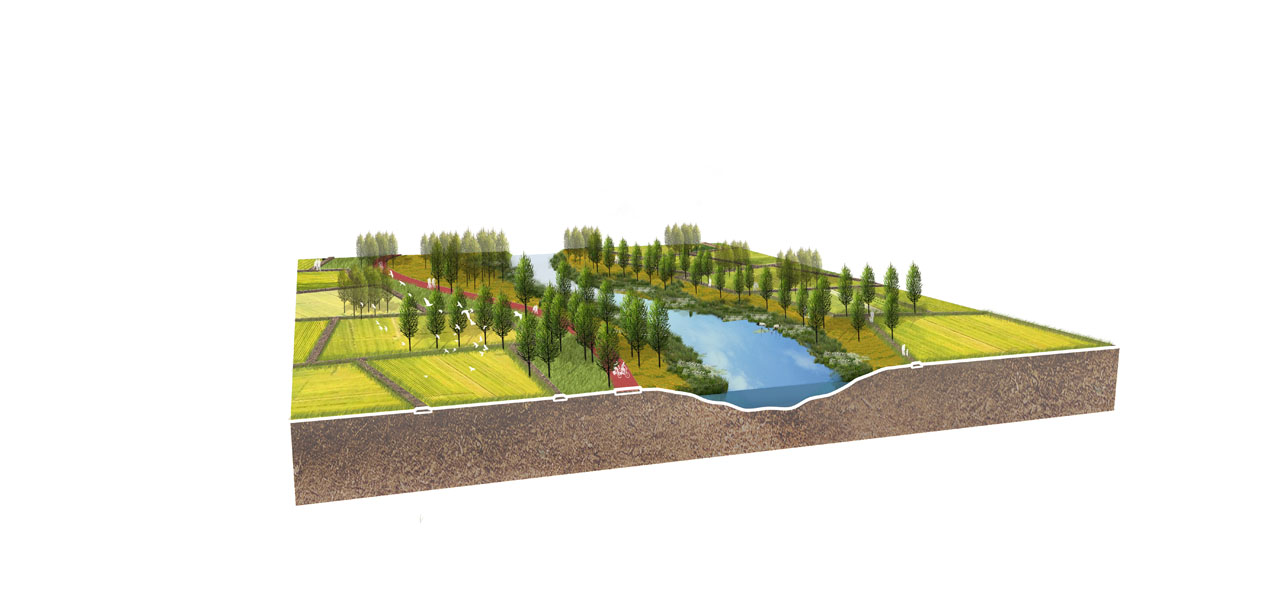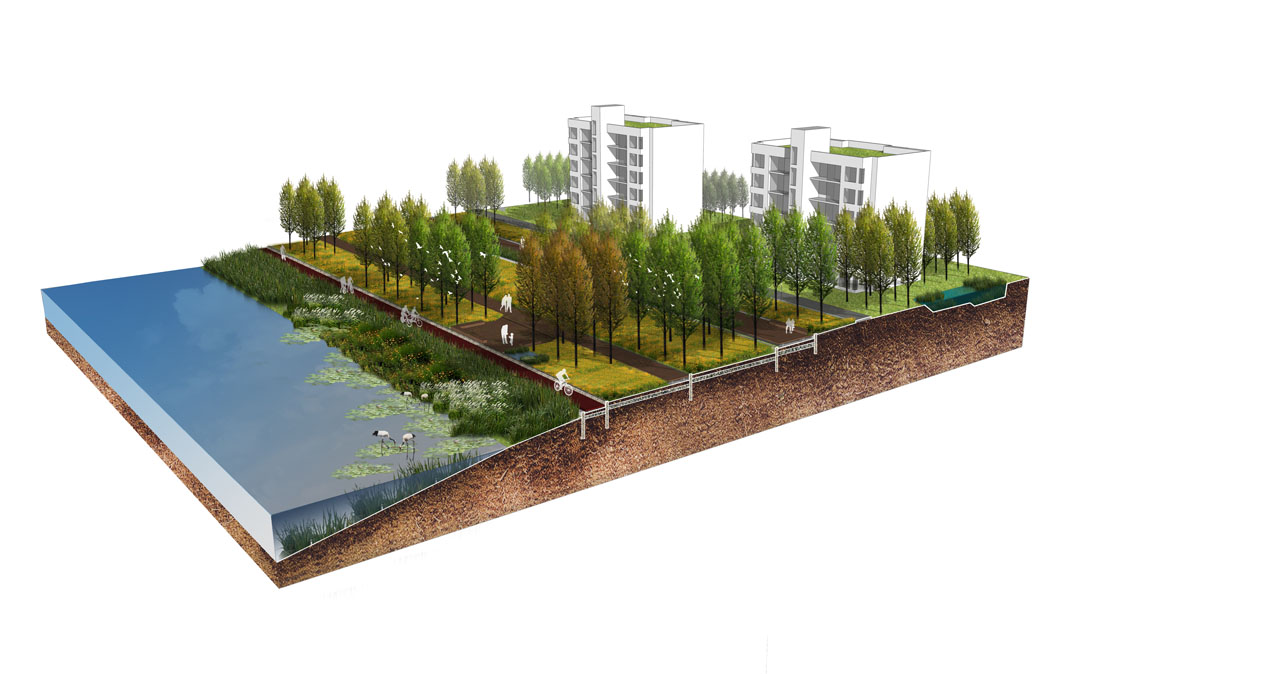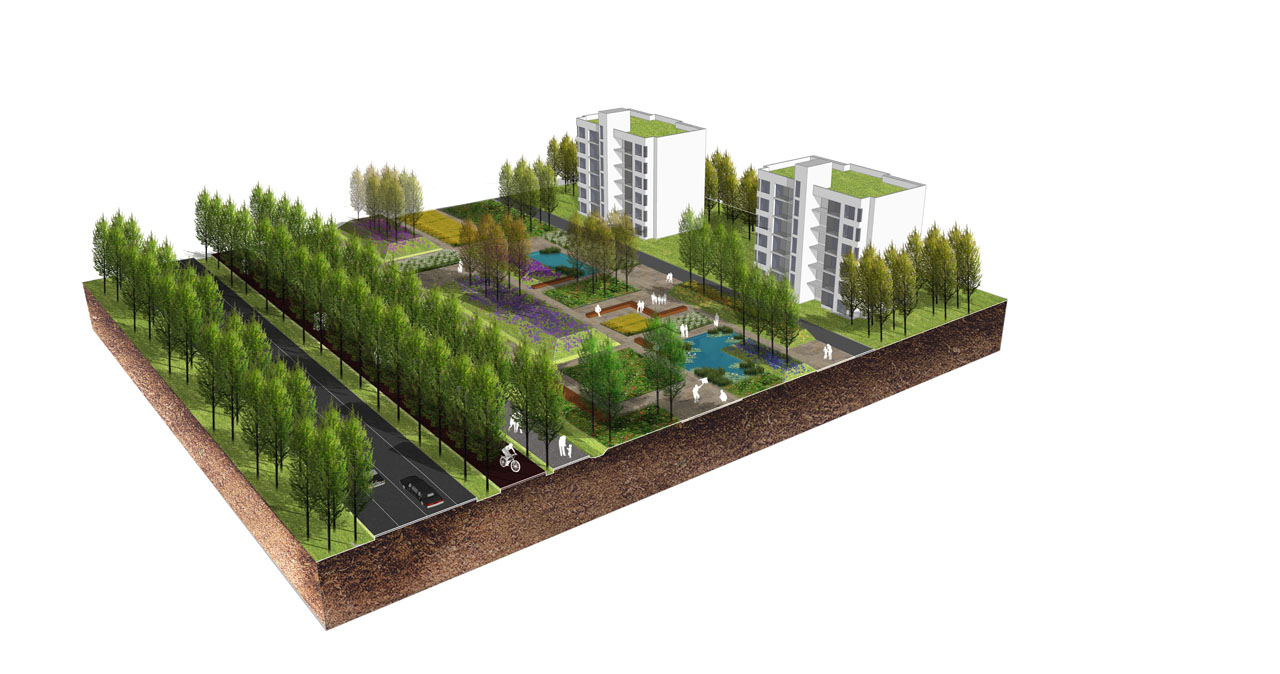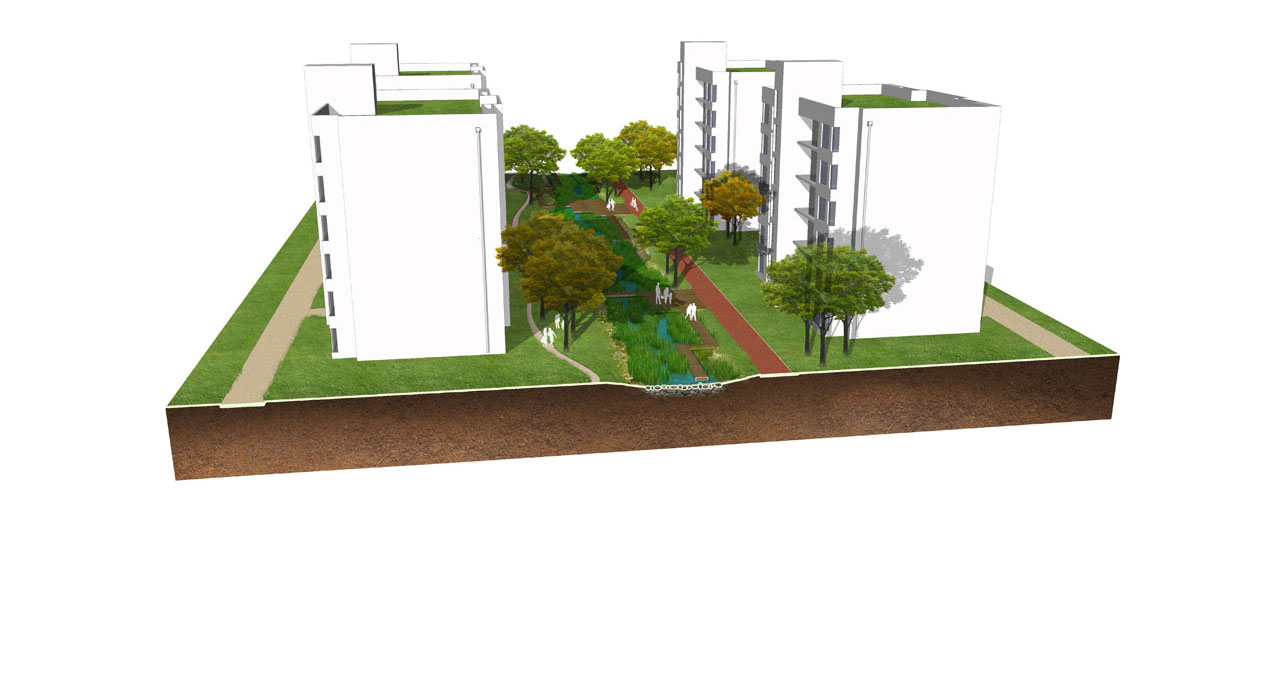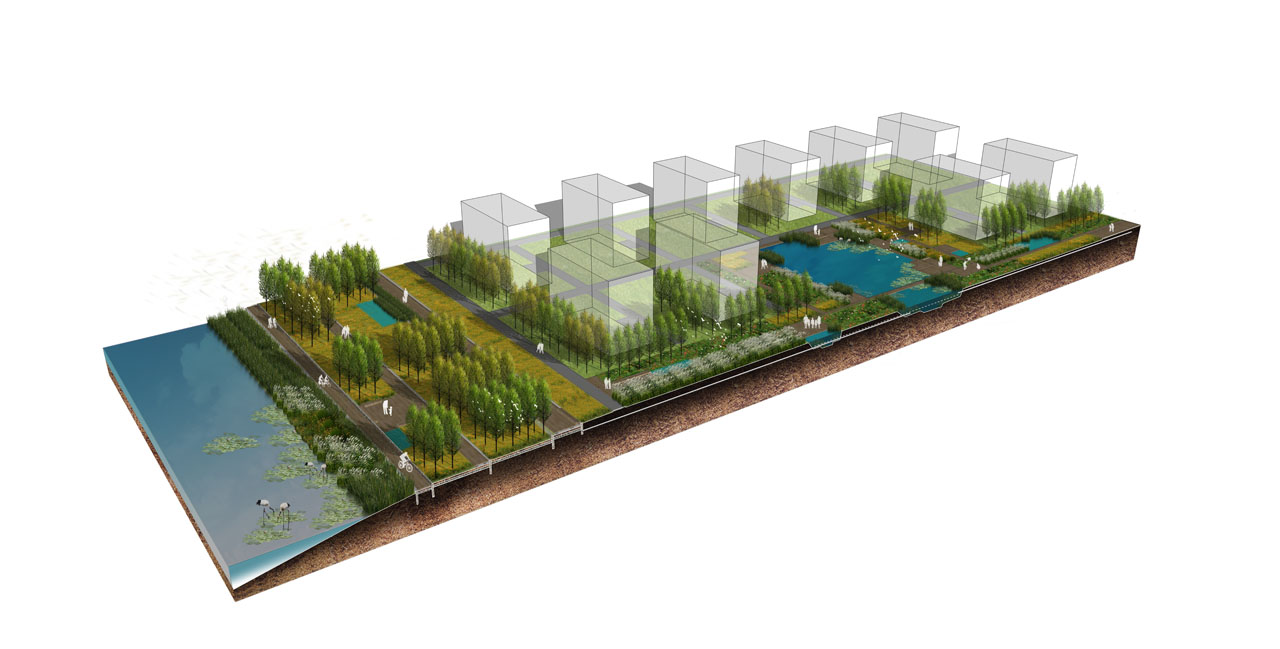Zhejiang Jinhua River Basin Sponge City Planning
Project Information
- Project Location:
- China Jinhua, Zhejiang
- Project Scale:
- 4459 Hectares
- Design Time:
- March 2015
Project Profile
1. Project Statement
The project is located in Jinhua City, Zhejiang Province, including Yiwu, Jinhua, and Lanxi. The project addresses the issues of concentrated rainfall and waterlogging due to hilly terrain in the Jinhua River basin by proposing the "Sponge City" planning concept. This concept enables cities to have good "resilience" to adapt to environmental changes and respond to natural disasters, absorbing, storing, infiltrating, and purifying rainwater during rainfall, and releasing and utilizing stored rainwater when needed. This transition changes the management of rainwater from "rapid discharge" and "end-point concentration" to "slow release" and "source dispersion" with natural purification.
The plan aims to build a natural ecological spatial pattern for the Sponge City in the Jinhua River basin, improving water ecology, water environment, water resources, and water safety through upstream, midstream, and downstream collaboration. It fully utilizes the permeation, absorption, and purification functions of urban water bodies, green spaces, roads, squares, and communities on rainwater.
2. Objective and Challenge
2.1 Problems and Challenges
Challenge 1: Yiwu (Upstream)
Yiwu has numerous hills and limited construction land.
Water resources are scarce, and there are severe waterlogging and pollution issues, leading to an imbalance in the human-water relationship.
Challenge 2: Jinhua (Midstream)
Rapid urban development has resulted in extensive hard surfaces, hindering rainwater infiltration.
The annual runoff control rate is low (only 42%), and the hilly terrain causes easy waterlogging.
Challenge 3: Lanxi (Downstream)
Lanxi faces numerous external water sources.
The city is prone to flooding due to the convergence of water from the Qujiang and Jinhua Rivers.
The natural terrain, characterized by high and steep hills, causes water to accumulate easily in the basin.
2.2 Objectives
The plan sets overall objectives and specific indicators for each city to ensure the implementation of the Sponge City plan.
Overall Objectives:
Annual runoff control rate, flood prevention standards, and urban flood control standards.
Yiwu, Jinhua, and Lanxi: 75% annual runoff control rate, with respective design rainfall amounts of 20.9mm and 21.1mm.
Specific Indicator System:
Overall control indicators (general planning scale), zonal control indicators (controlled planning unit scale), and block control indicators (project implementation scale) to ensure the achievement of planning goals.
Indicators include annual runoff control rate, permeable surface area ratio, water area ratio, ecological shoreline ratio, urban heat island effect, surface water quality standards, rainwater-sewage separation ratio, non-point source pollution reduction rate, sewage reuse rate, water supply network leakage rate, urban waterlogging prevention standards, rainwater pipeline discharge standards, urban flood control standards, drinking water source water quality compliance rate, and tap water quality compliance rate.
3. Design Strategy
Strategy 1: Macro Level - Constructing a Natural Ecological Spatial Pattern
Prioritizing non-developable areas based on water ecological safety, biodiversity protection, and water cultural heritage protection.
Revising the city’s ecological protection boundaries.
Strategy 2: Meso Level - Building Green Sponge-Based Water Ecological Infrastructure
Addressing water ecology, water environment, water resources, and water safety by constructing a green sponge system and strictly controlling the blue-green control lines.
Strategy 3: Specific Strategies for Upstream, Midstream, and Downstream Cities
Yiwu (Upstream):
Focus on controlling key sponge city blocks to enhance rainwater retention and reduce surface pollution, ensuring the ecological function of river corridors.
Jinhua (Midstream):
Emphasize the restoration of the urban water network, enhancing recreational functions of water corridors to improve overall city quality.
Lanxi (Downstream):
Design flood wetlands and rainwater parks to manage floodwater and ensure urban water safety.
Strategy 4: Technical Guidelines
Develop technical guidelines for corridor systems, sponge roads, sponge parks, and sponge buildings and communities.
Compile standard technical diagrams and plant selection lists suitable for the Jinhua River basin.
4. Conclusion
The plan analyzes the current situation, constructs a green ecological safety pattern, and delineates blue-green lines to guide rainwater management, alleviate flooding, and intercept pollutants, ensuring the quality of major river water bodies.
Expected outcomes include:
No water accumulation during light rain due to natural storage and infiltration facilities.
No waterlogging during heavy rain, reducing pressure on drainage systems.
Improved water quality, mitigation of urban heat island effects, optimized green space functions, and enhanced land value and city reputation.
